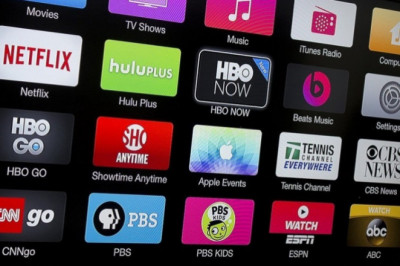views

According to new data from analyst firm Apptopia, as the COVID-19 pandemic spreads, grocery delivery apps have begun to receive a record number of daily downloads. Today’s grocery apps offer more than just shopping for products online: they allow businesses to increase their sales, enter a new market of active mobile users, learn more about their customers, and make targeted offers that increase conversion rates and therefore revenue.
In this article, we’ll discuss how to start a grocery delivery service by creating an app for your business, no matter if it’s a small store or a large chain.
What is the grocery app?
As the name suggests, grocery delivery apps allow customers to order groceries (or other items) to be delivered to their doorstep. The service itself is certainly not new, but the move to mobile devices has made it much more accessible and widespread. You don’t need to hire a domestic worker to deliver groceries. The only thing that is needed is just a couple of taps away.
Simply put, developing a grocery delivery app is like developing any other app that offers on-demand services. I.e., Uber. Uber has its on-demand food delivery service, Uber Eats. If you decide to start a grocery delivery business in the US, Uber Eats will be one of your main competitors.
Market trends and overview
Before diving into the technical aspects, let’s overview market size, current trends, and some statistics.
The COVID-19 pandemic is pushing consumers to buy products digitally. It is rapidly accelerating the adoption of online grocery services in the US. Thus, while the pandemic has given a big boost to the proliferation of online grocery stores, the industry’s resilience will depend on the duration of the pandemic. Let’s look at some numbers.
- Mobile apps are the primary tool for online grocery shopping. In early April 2020, global app downloads for grocery shopping reached 106 million per month. Walmart reported the highest number of downloads in April and was ranked #1 and #2 on the Google Play Store and Apple App Store, respectively.
- According to CNBC, it is expected that by 2025 sales will successfully capture 20% of the market. Other statistics show that the use of mobile apps for grocery stores will increase by 50% in the nearest time.
- 48% of grocery customers currently buy at least some of the items online.
What are the most popular grocery delivery apps?
There are many online grocery delivery business applications that are gaining tremendous success and popularity day by day. Among them are:
Instacart
Instacart is one of the leading online grocery shopping sites, currently serving 26 states and the District of Columbia. The app connects customers with freelance shoppers who bring them groceries from any of their preferred supermarkets such as Costco Whole Foods and Petco. Instacart Express membership is $149 per year, which translates to about $12.50 per month.
AmazonFresh
It is a leading grocery delivery service currently available in select US states, Tokyo, Berlin, London, Munich, and Hamburg. It allows people to choose from over 500,000 items and receive them the same day. AmazonFresh also offers early morning delivery and dispatch within the requested 2-3 hour pick window.
Vons
Vons is a Southern Nevada and Southern California supermarket chain that operates stores under the Pavilions and Von’s banner. The main advantage of the app that it is faster and easier than other services.
Peapod
Peapod is one of the best online supermarkets in Illinois, Chicago. It delivers groceries from the company’s stores and warehouses in the Chicago area. Peapod currently operates in the District of Columbia and 13 US states. Peapod offers over 12,000 different products such as organic food, convenience food, gourmet, and seasonal products.
Complete strategy on how to build a grocery app
There are several steps to make your own grocery delivery app. Here is the list of the main of them.
Step #1: Choose your business model
As we told above, there are four different types of online grocery apps: marketplace, aggregator, grocery chains, single stores. Each of them has some specialties. Thus, you need to choose the one that suits your business goals the best.
Step #2: Define the features you want to offer in your apps
You can’t just build one grocery store app. When it comes to the growth of on-demand grocery apps, there are three sides to an app: customer, courier, and admin. The main features of all these roles we discussed above.
Step #3: Design and other considerations
There are some important considerations you need to weigh before starting the process of building an on-demand grocery app. It would make it easier for you to prepare and sell the application to the client. Moreover, it ensures that the app is more distinctive than your competitors.
Step #4: Choose monetization methods
Any application needs to be monetized. After all, everyone needs an ROI on their app. But along with the kind of application you create, the methods of monetization also change.
How to monetize your own grocery delivery app?
On-demand grocery delivery services need to be not only convenient but also inexpensive to grab the attention of users. Let’s take a look at a few of the monetization channels that allow Instacart to generate revenue while remaining available to customers.
Cost of delivery
Almost any grocery delivery app charges users a fee to deliver orders to their doorstep. A percentage of the commission goes to the couriers and the rest goes to the company. Also, there may be additional charges for orders where the estimated total weight is bigger than a certain number.
Premium Membership
Membership is another monetization channel that offers significant benefits to customers. Benefits may include free shipping, requesting items from multiple stores in a single order with no commissions, reduced service fees, no pickup fees, etc.
Advertising
Grocery delivery apps generate revenue by promoting partner stores or certain products. Stores benefit from the huge user base, and the company makes a profit every time a shopper interacts with a promoted product.
Gift cards
Gift cards are an awesome way to monetize your grocery delivery app and get a chance to attract new customers.
The article was originally published at: https://code-care.com/blog/online-grocery-shopping-app-development












